Visiting Athens for the first time?
You probably learned in school about the history of ancient Greece and it’s most influential city-state, Athens. But you haven’t understood it fully until you have visited the historical sites yourself, felt the atmosphere in which they were constructed and heard the true tales in context of the people who forged and created them. Aside from the neverending good weather and beautiful sunsets, this is a major reason people come to Athens.
As you lay your eyes on the marble ground in the city centre, you will breathe in the timeless life of the people of Athens. From the heat and shouts of the people, just like in an ancient agora, to the elegant winding streets flowing through beautiful cultural buildings and the great emphasis on spiritual life and worship, the energy will sweep you away.
Acropolis of Athens

Acropolis Of Athens
Whilst everyone has heard of this major landmark that sits authoritatively above the city, there is some misunderstanding about what the Acropolis actually is. The definition of Acropolis is a high, fortified citadel. Therefore, the entire complex on the hillside that can be apprehended on the winding pathway up to the Parthenon- the majestic temple dedicated to the worship of the goddess Athena- is part of the Acropolis. This means that we should take our good time on our ascending journey, admiring the harmonious theatres of Herodion and Dionysus, the Erechtheion, the sanctuary of Zeus Polieus and the smaller temple remains to Athena Nike.
Once you have ascended to the top amongst the Parthenon, you’ll find views of Athens and the surrounding Attica landscape that surpass all others. It’s advisable not to climb to the summit in the midday sun as it can be tiresome, and to really allow yourself to feel the atmospheric energy of the site, which still commands attention over 2,500 years after it’s conception. Alight at Acropolis metro station and walk along Dionysiou Aeropagitou street until you reach the stepped slopes up.
Ancient Agora of Athens
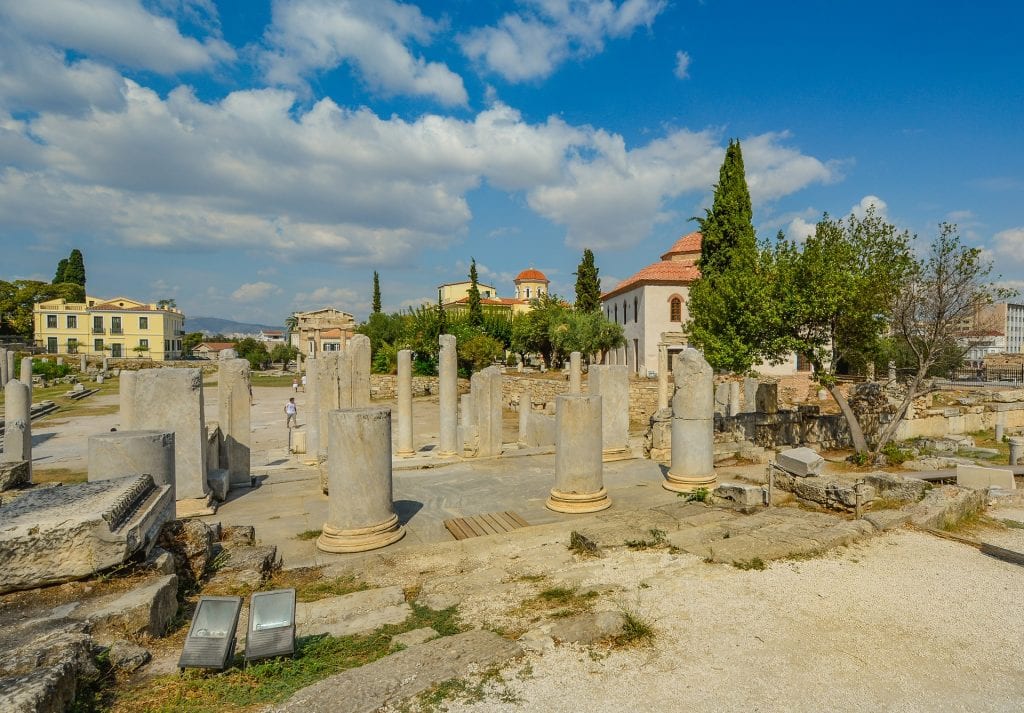
Ancient Agora of Athens
To the north-west of the Acropolis, at the base of Market Hill is the Ancient Agora. This is a huge landmark and a site that mustn’t be missed. As in today’s time, a central hub of the urban culture is at the marketplace, and this is precisely what the Ancient Agora was all about. A huge marketplace that served as the epicentre of the cultural life, providing places for trade, games, education, debate, worship and gatherings. Nowadays, we can see the remnants of the places where such activities held, including the Temple of Hephaestus, the Altar of the twelve gods, the Odeon of Agrippa, the Library of Pantainos and the Bema speakers platform. The site is also well managed with many varieties of local trees and flowers. As the site is fairly open, it can get quite hot in the summer season months, so it’s good advice to bring a hat and water. There’s also a museum located inside the Stoa of Attalos.
Hadrian’s Library
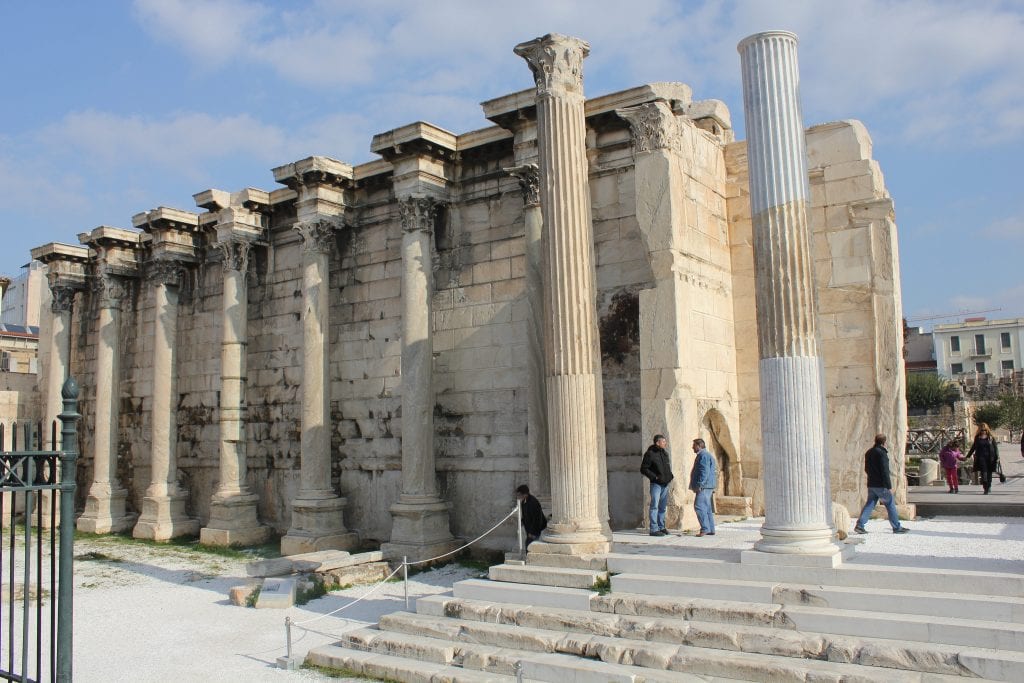
Hadrian’s Library
This historical site, located just to the side of Monastiraki square is a strong reminder of the Roman Emperor Hadrian’s reign in Athens during the height of the Roman Empire. Although you’ll no longer be able to find books in there, you will see the sites of where once stood the scroll room on the east side, with reading rooms and lecture halls at the west. The library is conducted in a typical Roman forum style design. As time went on, there have been three Byzantine churches at the site, with remains still viewable. There is also a small museum.
Temple of Olympian Zeus
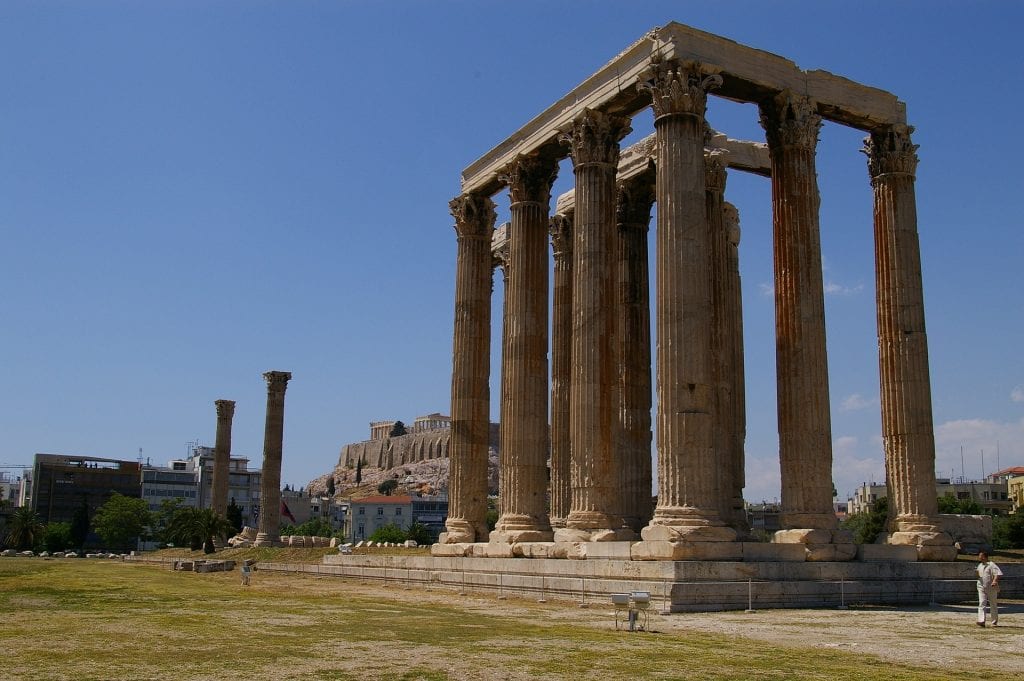
Temple of Olympian Zeus
Between the neighbourhoods of Acropolis and Syntagma, and across the main avenue, you will first see the site of Hadrian’s Arch, standing like a majestic portal through the trees and into the fields surrounding the Temple of Olympian Zeus. Although it was originally in production for hundreds of years, it was finally finished by Emperor Hadrian during the Roman occupation of the city. At its zenith, it was composed of 104 huge columns, but the site now stands with just 16. It also once housed a great statue in reverence to Zeus, the Greek god and head of the Olympians. Now the site can be admired whilst standing in the great green field and feeling the breeze of the same winds that would have cooled ancient revellers on a warm day.
Aristotle’s Lyceum
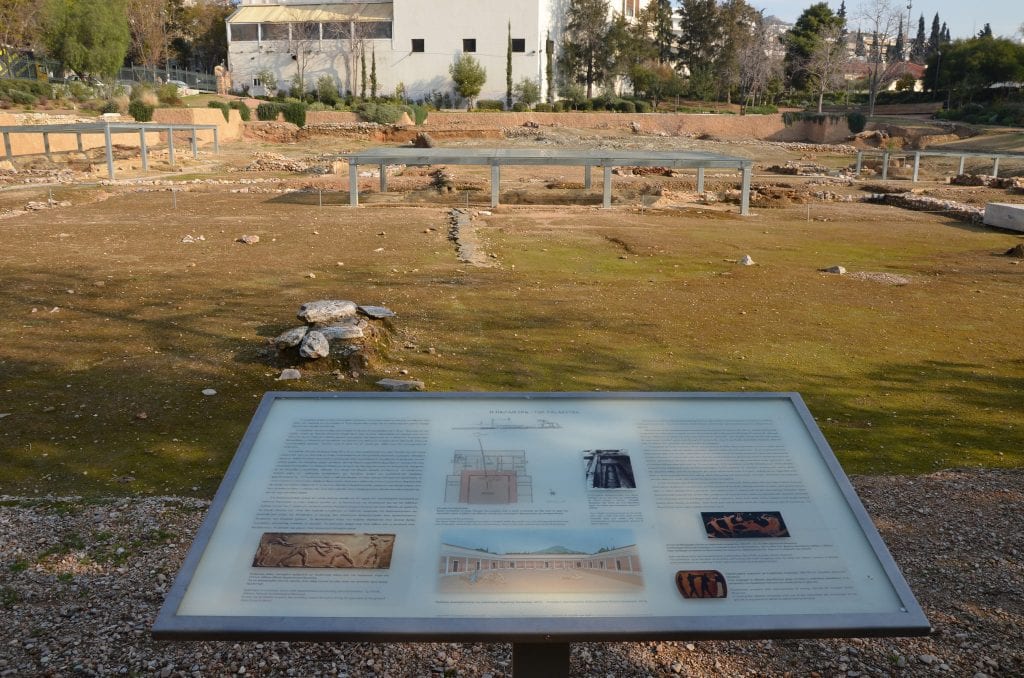
Aristotle’s Lyceum
When passing the National Gardens and heading past the Greek Parliament, next to the Byzantine museum, you will find the Lyceum of Aristotle. The great philosopher of ancient times, that fundamentally influenced Western thought, subsequent scholars of Christianity and was the teacher of Alexander the Great. Although the Lyceum or Lykeio is the equivalent of high school in modern Greek society, for Aristotle it was a place of life education and training for a select few. It once composed of a library, a teaching area, a public lecture square and a gymnasium for sporting training. Although a lot was destroyed by the Roman invasion of Athens, and what remains are largely ruined excavations, it’s worth bringing your imagination and seeing through into a tranquil grove off the main road, that once harboured the greatest minds of the city.
Plato’s Academy
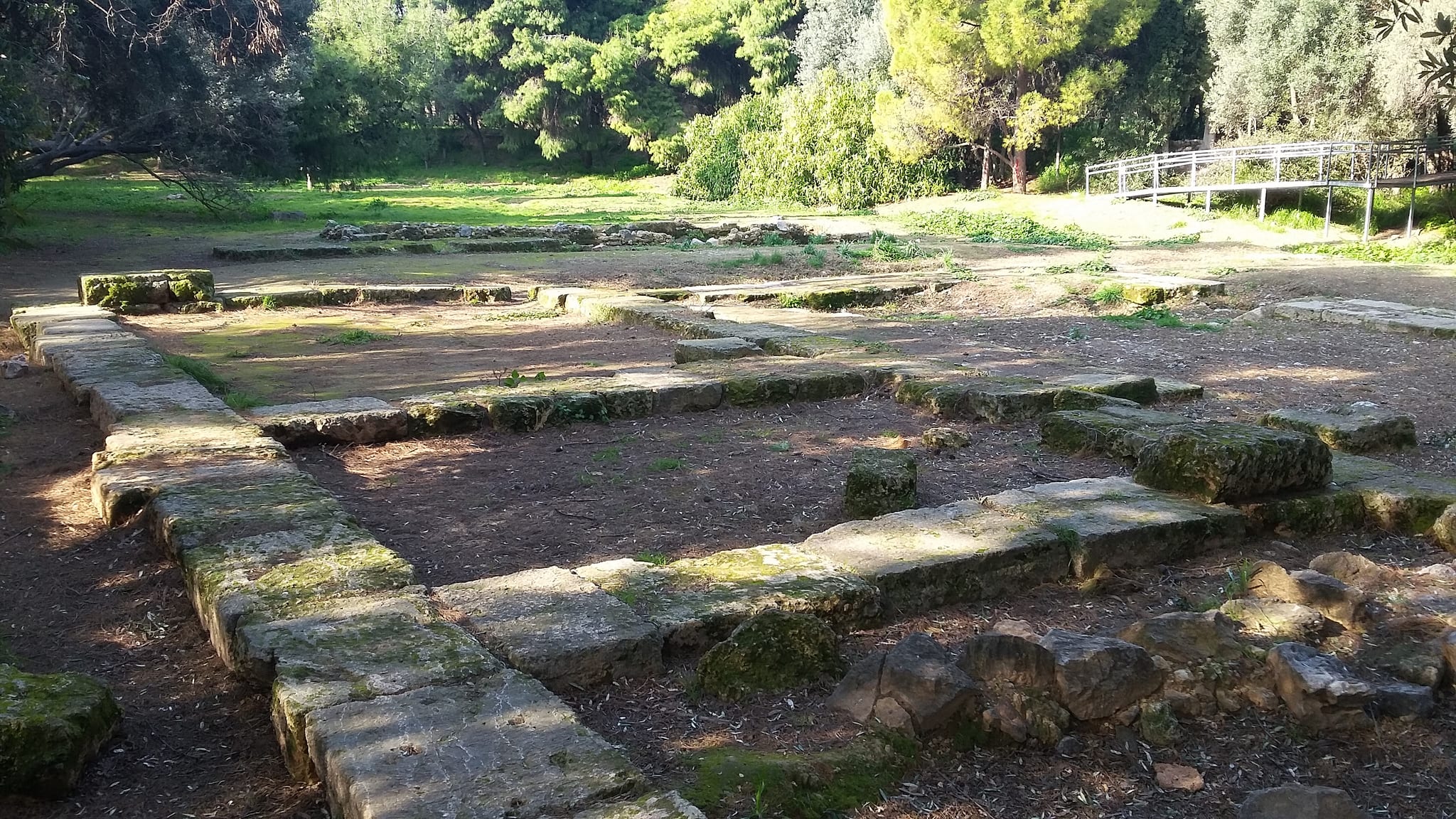
Plato’s Academy
A little further out than the city centre, but an absolute must for a scholar of philosophy, is the Academy of Plato. Take the metro to Metaxourgeio or the suburban railway to the stop ‘Athens’ and either walk or take a bus line 51 to Palaio Terma and the Academy of Plato. What was once the site of an ancient olive grove, said to be dedicated to the Goddess Athena, there stood the grand building in which Plato initially established his school. Again, the Roman empire didn’t take kindly to the site and it was razed, leaving little of the buildings and gymnasium left. Nonetheless, it’s still worth it for both the bright and restorative park away from the bustle of the city, the museum there and to truly see the birthplace of organised Western philosophy.
Historical Monuments Outside Athens
If you have more time to spend in Athens and you are eager to explore more beyond the city center, here are the most famous monuments in outside of the city.
Delphi Archaeological Site
Delphi was the mystical centre of the ancient world, a place where pilgrims paid homage to Apollo and the heads of all the city-states that made up classical Greece, consulted the famous Oracle. It is located 180km away from Athens, towards the centre of the mainland, amongst the slopes of Mount Parnassus thus making it one the most popular day trips from Athens.

Delphi Site
Tempe of Poseidon
Temple of Poseidon is located 67km away from the centre of Athens, at the southern tip of the Attica peninsula at Cape Sounion. It was an important place of worship for the Athenians and it is dedicated to the god of the sea

Temple of Poseidon
Meteora Monasteries
Meteora is a unique location throughout Greece and the entire world. It is a collection of medieval monasteries on top of precipitous mountain tops, reaching up into the heavens. The name means ‘aloft in the air’ and it has been a place of pilgrimage for centuries, as well as a sanctuary for Orthodox Christianity during the Ottoman occupation of Greece. Meteora is located just over 350km away from Athens, above the nearby town of Kalabaka in central Greece.
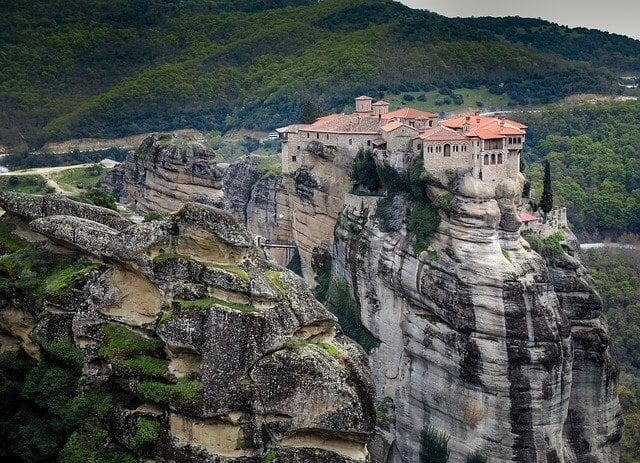
Meteora Monasteries





